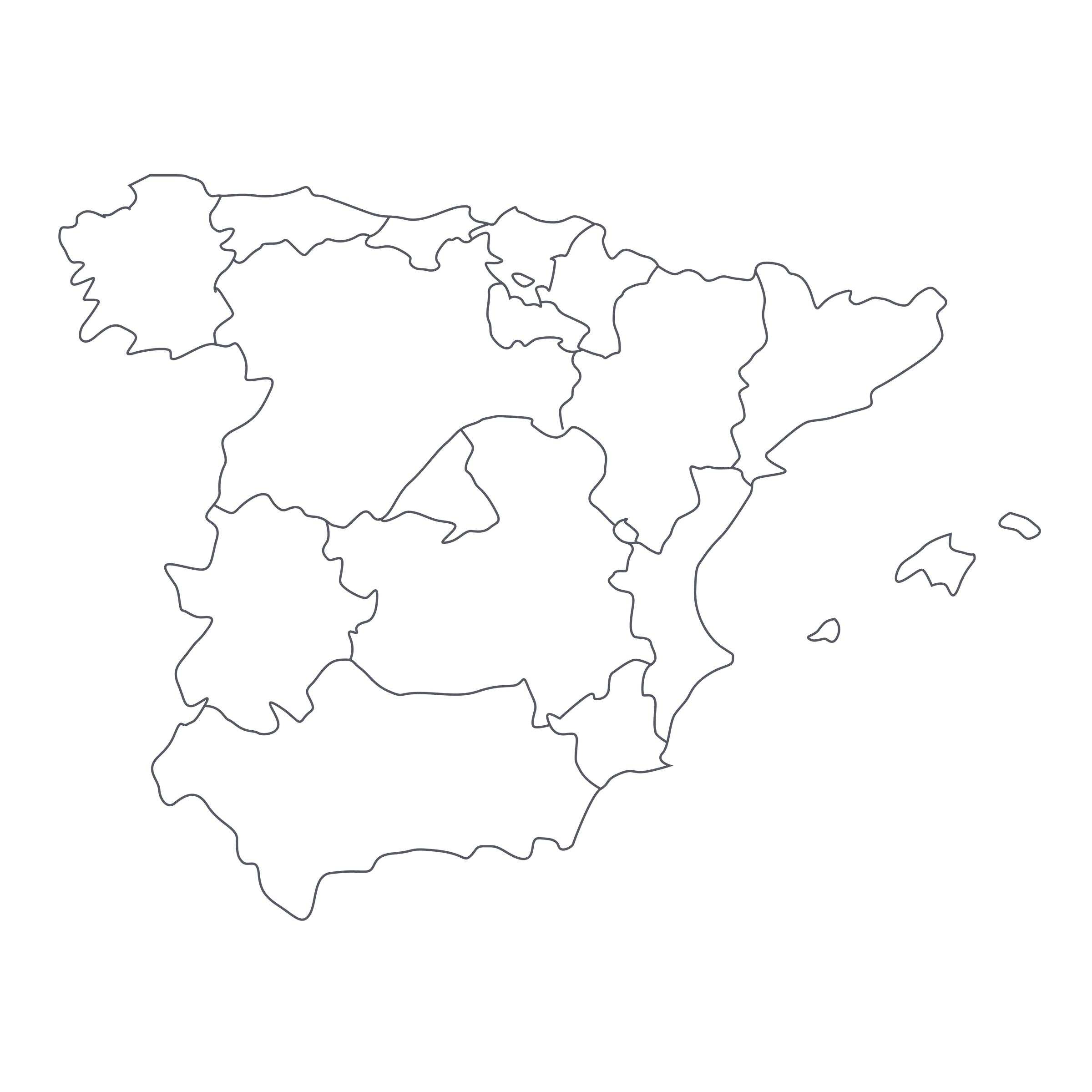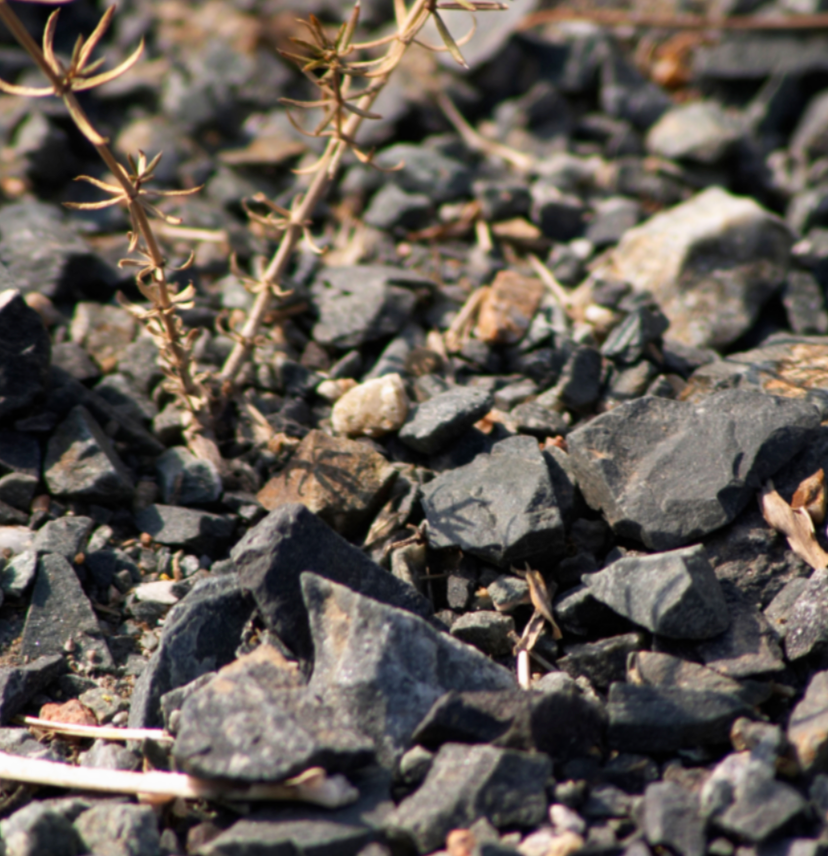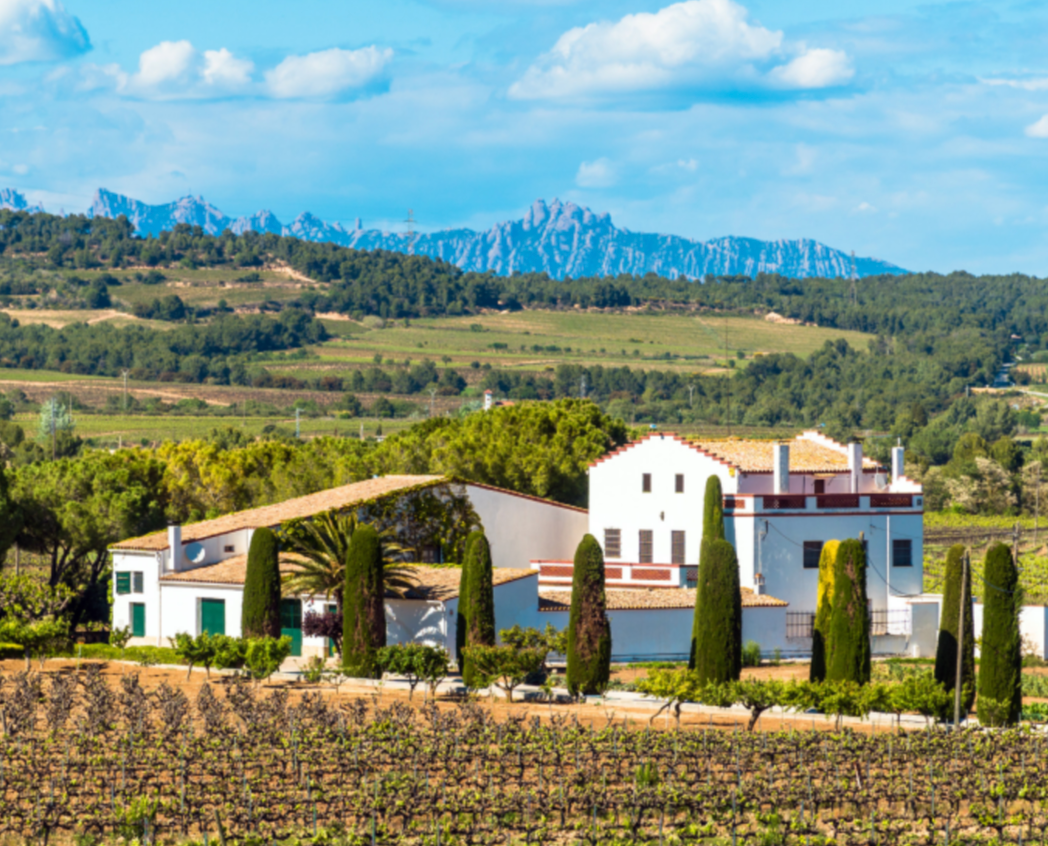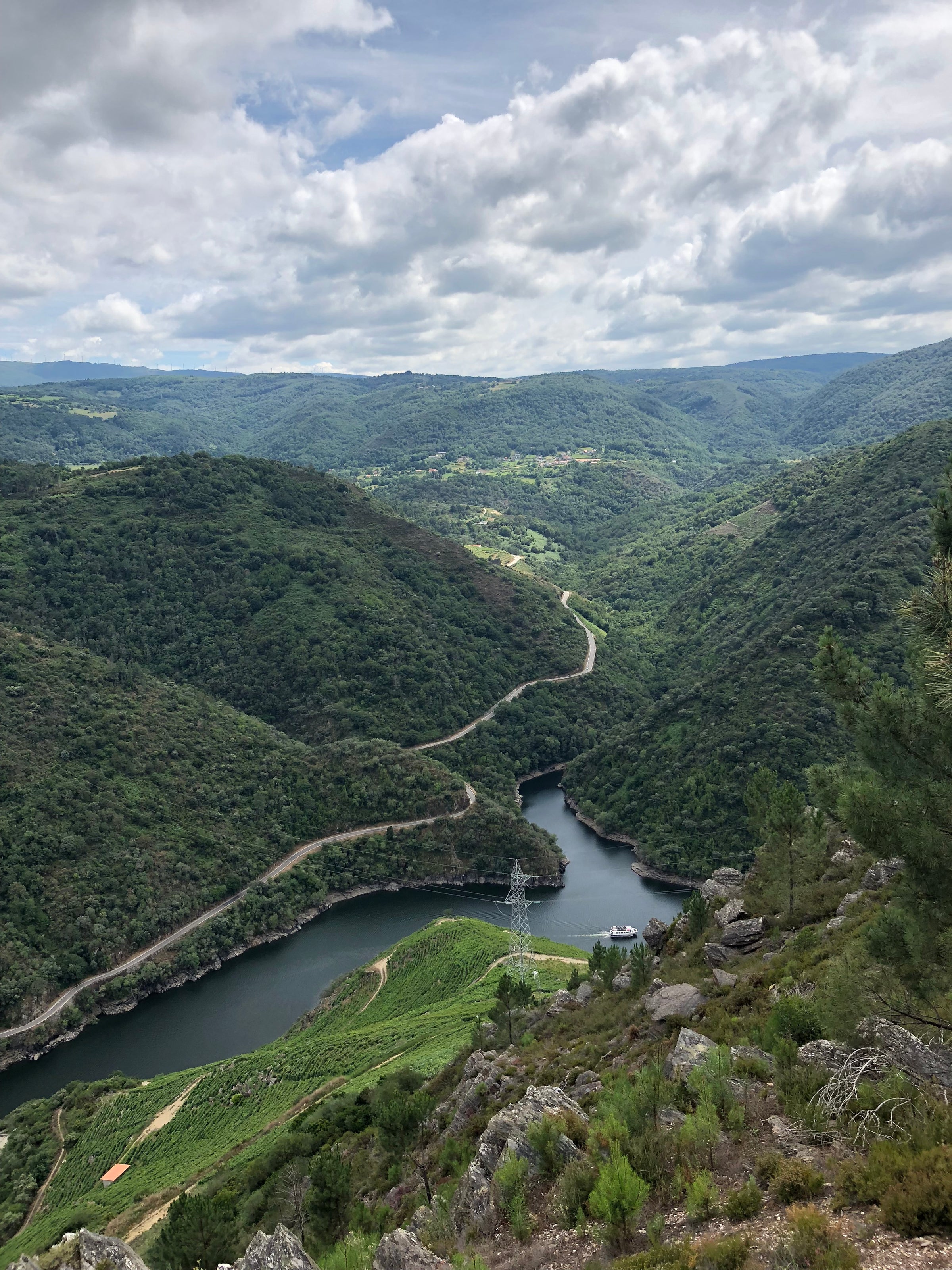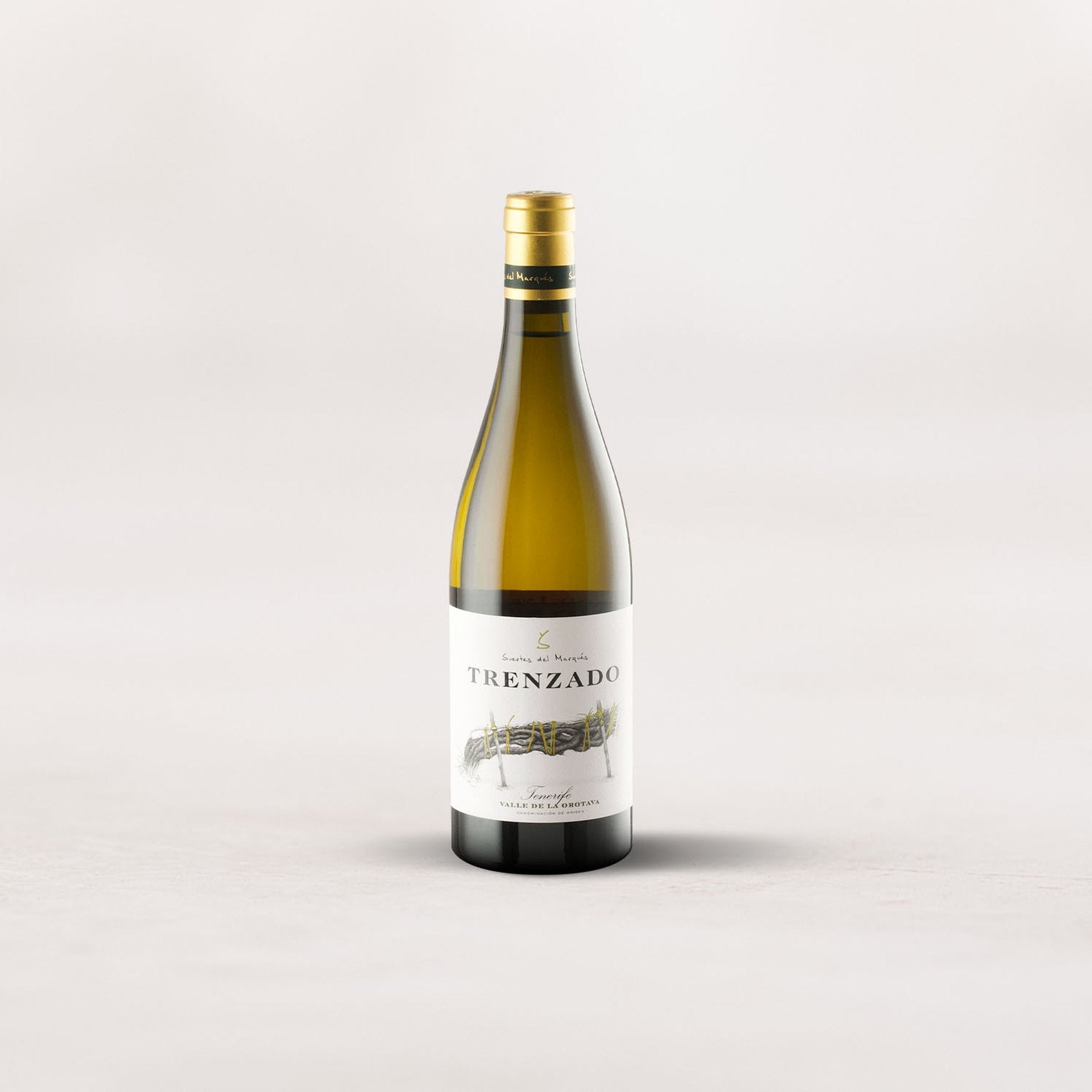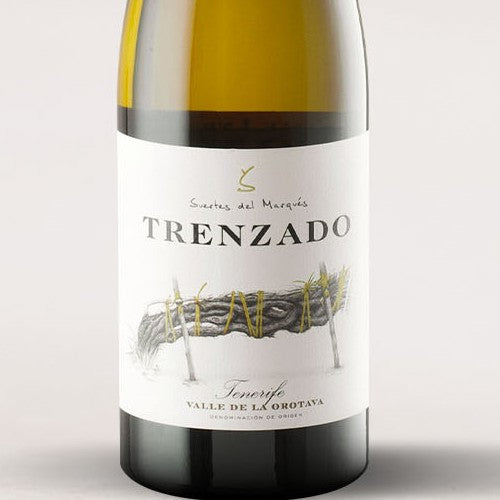If Burgundy was hurled into the deep waters of the Atlantic, today’s offer would likely be one of its insular creations. And yet in the same breath, I find that the wines from Suertes del Marqués are so unique, so wholly their own thing, that comparison isn’t necessary—or even fair. If you have yet to experience a bottle of “Trenzado” Blanco, prepare yourself for a wine that shouts its “somewhere-ness” from the craggy volcano-top of Mount Teide!
The exotic setting is Tenerife, the largest island of the Canarias, where vinous raw material clings to steep hillsides that spill into the ocean. But the vine’s individual makeup is the strongest attention-grabber for me: Many of these ungrafted trunks are 1-2 centuries old, and the “arms” of the grapevine are painstakingly fashioned into gnarled, winding braids that can stretch as far as 80 feet! As for the taste? Listán Blanco is a singular crash course on smoky, flinty minerality in liquid form, with a generous helping of plumply textured fruit. I said it when I visited Suertes del Marqués four years ago, and I’ll say it again: Taste this wine once, and you’ll remember it for life. This is the qualitative equal of any world-class, age-worthy white so celebrate this magical $32 stuff with joyous abandon!
As we learned during our visit a few years ago, Jonatan García Lima is operating out of a polished winery tucked into a hillside overlooking the Atlantic. Prior to starting the Suertes del Marqués label in 2006, Jonatan’s family had grown grapes in the Valle de la Orotava; they now draw on 11 hectares of organically farmed estate vineyards, along with a host of other local growers who work according to their specifications.
The vineyards range from 200-700 meters of elevation, in soils largely comprised of dark, sandy, volcanic ash. As is the case in other such island terroirs (whose soils proved resistant to phylloxera), many of these vineyards contain extremely old vines, including some ungrafted parcels exceeding 100, even 200+, years of age. Along with Listán Blanco and Negro, the two best-known native grapes on Tenerife, Suertes del Marqués also work with Pedro Xímenez, Tintilla, Baboso Negro, and other field-blended local varieties.
Their 2021 “Trenzado” Blanco is 95% Listán Blanco (known as Palomino Fino in Sherry) with a mixture of other native varieties. Throughout the growing season, farming is laboriously done by hand. In the cellar, a natural fermentation—including malo—occurs, and used barrels of various sizes are employed for aging, which lasts for about 10 months. Most of the wine was left in contact with its lees during this aging period, which lends an otherwise fresh, lip-smacking white some creamy depth and texture. Ultimately, though, the story of this wine is its intense mineral component.
After a brief decant, this surges out of the glass with creamy, brackish yellow fruits and enormous swells of struck flint and stone. That fierce reduction/minerality comes across like a white Burgundy on volcanic steroids, but the gorgeously soft and invitingly textured palate proves this smells a lot more intimidating than it really is. Bright bursts of apricot, green and yellow apple, fleshy peach, and citrus blossoms pulse throughout a sublime mouthfeel backed by stirred lees, burnt toast, and nori. It is an absurdly delicious wine that continually shapeshifts as the reduction blows off. While impossible not to enjoy now, I think another 6-12 months in bottle will push this into a profound territory. Cheers!
